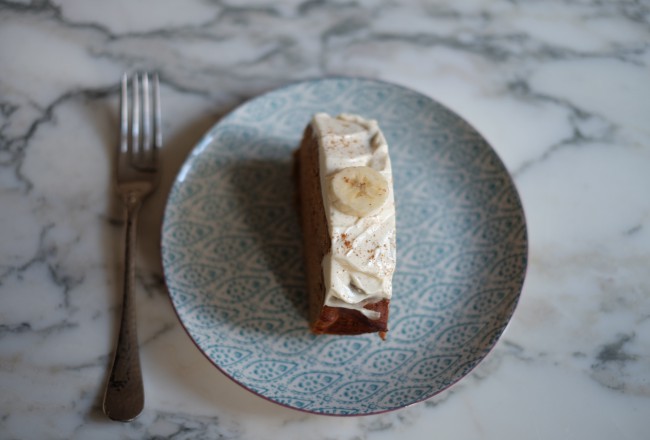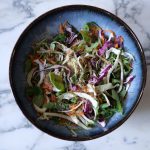So, we’ve worked out that refined sugar is to be avoided. What can we replace it with? Ideally, we should try to alter our taste buds and not rely on sweetness in food to make it palatable but let’s face it there are some days when we really feel like something sweet. (Some days = Everyday in my case, but I’m a work-in-progress, going the right direction!) So, what are the alternatives to sugar?
Sugar and sweet alternatives are everywhere. It may not be immediately obvious within the list of ingredients on the back of a packet but it comes in all sorts of guises:

Let’s look at a few of these:
Artificial Sweeteners (e.g. aspartame, sucralose, saccharin)
Our view is that artificial sweeteners should be avoided. They are indeed low in calories but they have been associated with carcinogenic effects. Instead we should be looking to natural alternatives.
Natural alternatives
We always try to replace sugar with other, more nutritious natural sweeteners. So here’s our go to list, other than using fresh fruit and dried fruit. Note that the list does not include agave. Some agave nectars are 92% fructose, only 8% glucose!
Coconut sugar/coconut blossom nectar: While this is not an excuse to go free-for-all, it is the most nutritious sugar in the world. Made from the boiled sap of a coconut tree, coconut sugar is a source of minerals, including zinc, potassium and magnesium, and the B vitamin inositol (a mood booster). However, while coconut sugar is low in calories and has a relatively low GI score (perhaps because it contains the beneficial fibre inulin), variations do occur in terms of purity (go for organic) and a good portion of it is still fructose (between 38%-45%). So, like any sweeteners, you still need to use this option sparingly.
Honey and maple syrup: These both have around 40% fructose and a fairly high GI but they also have so many health benefits! Maple syrup is made from the boiled sap of the maple tree and so, like coconut sugar, contains important minerals such as zinc and is a good source of antioxidants. These give it anti-inflammatory properties which, with a healthy diet, may help fight arthritis, inflammatory bowel disease and heart disease. Just make sure that your maple syrup of choice doesn’t have any other syrups (e.g. HFCS!) added. Honey has antibacterial properties and gives you a range of vitamins and minerals including vitamin C, iron, potassium and manganese. Our favourite honey nutritionally is Manuka honey which, while expensive, has natural antibacterial properties. Compounds in Manuka honey can stimulate the production of special cells that can repair tissue damaged by infection. Look for a high UMF rating (Unique Manuka Factor) for a honey that is potent enough to be therapeutic. Studies show that it is effective in fighting infection, promoting healing and (possibly) in relieving gastro-intestinal problems and reducing systemic inflammation. The science behind wider claims that Manuka honey can prevent and treat cancer, reduce high cholesterol and treat diabetes is as yet unproven. If you are going to invest in Manuka honey, heating it will destroy the aforementioned health benefits, so it is best used as a spread or in yogurt instead of in baking.
Please note: children under 12 months cannot be given any kind of honey due to the risk of conveying a bacterial infection called botulism.
Brown rice syrup: This contains 0% fructose and is a very sweet syrup that you can use as a substitution. It has been favoured by a lot of no-sugar advocates across the world. However, apart from being 0% fructose, it has negligible amounts of other nutrition. So, depending on your own diet, and how you digest fructose it might be the best solution for you (some people are very sensitive to fructose, and even honey and maple syrup cause upset tummies).
Blackstrap molasses: This is made from sugar cane as a result of the refining process that goes into extracting sucrose for table sugar. It is very dark and has a distinctive taste that can be overwhelming. So, while this is one of the most nutritionally dense natural sweeteners around (a great source of iron, calcium and magnesium) we at TMA are still not using it as much as we would like because we haven’t worked out how to get it past our kids! If any of you have any great recipes using this potent syrup, we’d love to learn about them!
Stevia: This naturally very sweet herb is extracted from the stevia plant native to South America. It is free of calories and doesn’t cause blood glucose levels to spike and so, for this reason, it is often recommended to diabetics as a natural low GI alternative to sugar. Stevia is extremely sweet so a little goes a long way. While plant-derived, it does have a slight chemical after-taste so is not our go-to on the yummy scale. More importantly, the safety of long-term use of stevia is still unclear so we would advise you use in moderation and always choose the purest “whole-leaf” form that you can find because some of the stevia products available are mixed with an array of other less natural and more processed sweeteners.
Xylitol: Extracted from birch wood this sweetener comes in a powdered crystallised form that makes it easy to use when baking. It has a low GI and while it tastes very similar to sugar it contains far fewer (40% less!) calories. Studies have also shown that it can help in the prevention of tooth decay and the regeneration of dental enamel. It sounds an ideal sugar substitute doesn’t it? Xylitol certainly appears to be a good alternative to sugar but only in small amounts. Caution needs to be exercised when using it because it can cause diarrhoea in some individuals and studies have queried whether–when used in high doses for years- it may have carcinogenic effects.
My diet and our conclusion on sweet stuff
While my diet is almost entirely free of refined sugars, I am absolutely unable to give up all “sweetness” in my diet, so the use of some of these natural alternatives is essential to me. My go-to is coconut sugar and coconut blossom nectar. I love the flavour, possibly because I grew up largely in the tropics, and I love that there is some nutritional goodness to these products. I wouldn’t eat pancakes without a splash of maple syrup and I use Manuka honey medicinally. I do not use any artificial sweeteners, xylitol or stevia. In small amounts, perhaps these are fine, but the long-term effects are unknown. I feel concerned that there are many girls and women out there who overuse calorie-free products because they are calorie-free, without realising that calories are not the only enemy in food. This knowledge makes their use of such products less intentionally rationed than it should be – women are still so obsessed with calories as numbers. So I would just say, if you recognise yourself in that comment, become more mindful about your use of sweeteners of any kind. There isn’t a single one that anyone can credibly argue is good for you in anything other than small amounts. That is not to say I don’t overdo it on cake, sweet cocktails, flapjacks or ice-cream once in a while. We all do!
If you are a sugar-monster, we have a few tips for you based in science because I am secretly a recovering sugar junkie. I still need a fix once in a while but largely am off the dangerous white stuff. How?
- Slowly adjust your taste buds. It takes three days for your palate to re-calibrate. What do you have sugar and sweetness in? If you have sugar or sweetener in your tea or coffee, slowly reduce it so you get down to the least that you can manage. Try changing your milk or adding coconut oil. That might sound odd but it works. I have found that adding coconut oil to coffee or using only full fat dairy products means I don’t want any sweetness. Sweetness is a poor nutritional substitute for the taste provided by fat. Further, the fat will satisfy you for longer; the sugar will do the opposite and make you want more.
- Set yourself specific, manageable targets. Recognise the times of the day or places where you find sugar difficult to resist and put in sugar safeguards. I actually have a lot of self control but I know a model who requests that all her hotel mini bars are de-confectionarised before her arrival, and another who takes a different route between her flat and the tube station to avoid passing Ben’s Cookies. Be sugar smart.
- Up the fibre, healthy fat and protein content of your diet. This is the most important one. If you try to exist on a low fat diet, you will crave sugar. If you don’t eat enough fibre and protein, you will crave sugar. Eating enough fibre, protein and fat will make you feel satiated and you’ll have a more sustained release of energy making those sugar cravings less likely to appear. It is much more sensible (in nutrition and in life!) to deal with the cause of a problem rather than just the problem.
My recipe here is probably my favourite so far on the blog! I absolutely love these flapjacks so much. I find it really hard to stop eating them so I don’t bake them too often. One more time: natural sugars are still sugars. A young fitness blogger told me a while ago that she had gone “sugar-free” and managed to resist the urge to eat a Creme Egg by consuming what sounded like the entirety of a bottle of maple syrup mixed with raw cacao. I didn’t know quite whether to laugh or cry. Deliciously Ella brownies are still brownies. My coconut flapjacks are still flapjacks. You cannot eat limitless amounts of this stuff. It IS nutritionally superior to sweet treats baked with refined sugar but don’t let that knowledge cloud your judgment on portion control. Lecture over, here are the flapjacks! (My kids love these too BTW. This flapjack is a great way of getting omega rich seeds and MCT rich coconut oil into them. Flapjacks with no butter and no sugar but in my opinion taste better than traditional ones. N.B. These are very sweet. Remember your portion control…)
TMA COCO-CHIA FLAPJACKS
Ingredients:
- 90g coconut oil

- 50g coconut blossom nectar
- 80g coconut sugar
- 130g rolled oats
- 50g desiccated coconut
- 30g sunflower seeds (I used to use pumpkin seeds but my daughter is currently rejecting “green seeds”. Toddlers are hilarious. I will win.)
- 40g raisins (or other dried fruit. Chopped apricots, goji berries and cranberries are superior nutritionally. Again, toddler constraints.)
- 50g nuts roughly chopped (I use cashews and pecans)
- 2tbs chia seeds or ground chia seeds
- 2tbs ground flaxseeds
Method:
Heat coconut oil and syrup in a saucepan over a low heat until it begins to bubble, stirring regularly.
Combine all dry ingredients in a mixing bowl. Once syrup mixture is heated, pour it over the dry ingredients and mix well.
Press mixture into a lined loaf tin and bake for 20 – 30 minutes at 180 degrees. Leave in the tin to cool before removing it and cut it into small squares or slices. Enjoy!








